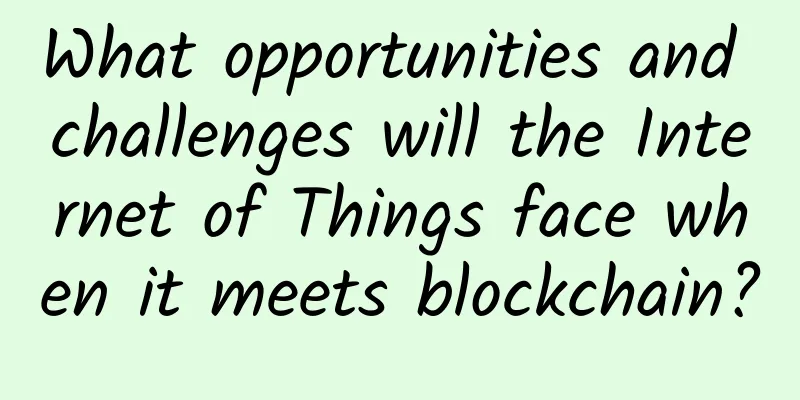The latest market analysis shows that Bluetooth is becoming an important driving force in the IoT industry

|
As early as several years ago, major market research institutions have made optimistic predictions about the potential of the Internet of Things. In the future, the number of connections in the Internet of Things will reach tens of billions, far exceeding the number of connections in mobile phones. In fact, judging from the current development results of the Internet of Things, this vision is gradually being realized. Of course, the number of connections in the Internet of Things varies, and Bluetooth will play an important role in it.
The evolution of Bluetooth technology is more IoT-oriented As an "old" technology that has been used for decades, Bluetooth has seen its application scope and market recognition increase day by day, which is inseparable from its long-term continuous technological evolution. Especially in the recent important evolution versions, Bluetooth technology has become more "IoT-oriented", for example: BLE solves the problem of excessive Bluetooth power consumption, which is a very core indicator in IoT devices, because low power consumption can not only improve the user's product experience, but also has a positive significance in reducing costs, especially for battery-powered devices. The emergence of BLE has enabled various smart homes and wearable devices to begin using Bluetooth technology for transmission. Mesh solves the network coverage problem. In regional scenarios, the cost of using independent APs or gateways for network coverage would be very high. However, Mesh technology can solve the networking problem of multiple devices in a regional application scenario at a very low cost. High-precision positioning has opened up a larger application market. As a basic data dimension, location data has broad application prospects in the future. In the future, more than two-thirds of IoT devices will collect location data, and in terms of positioning, accuracy is the most core indicator. In the 5.1 version of Bluetooth 4.0, AOA positioning technology was added. Compared with traditional RSSI positioning, the accuracy has been improved from meter level to centimeter level. The power of the Bluetooth army is gradually expanding The continuous development of Bluetooth technology is inseparable from the promotion of the Bluetooth Special Interest Group (SIG). SIG has played a great role in the formulation of Bluetooth standards, the evolution of technical versions, the construction of communities and the promotion of market brands. On May 23, 2019, the Bluetooth Asia Conference (Bluetooth Asia 2019) was held in Shenzhen. At the conference, the latest development achievements of Bluetooth were demonstrated, especially the gradual expansion of the current Bluetooth army. Source: Bluetooth SIG It can be seen that in 2018, the number of members of the Bluetooth Technology Alliance approached 35,000 companies. At present, with the increasing number of various wireless communication technologies on the market, Bluetooth still maintains its strong vitality. In the Asia-Pacific region that we pay most attention to, there are more than 12,000 Bluetooth Technology Alliance companies, and the number of Chinese companies exceeds 6,000, accounting for about half of the Asia-Pacific region. Source: Bluetooth SIG The shipment volume of Bluetooth devices has also been steadily increasing. In 2018, the shipment volume of Bluetooth devices was 3.7 billion units, and it is expected that in 2023, this number will reach 5.4 billion units. Among them, the number of low-power Bluetooth devices will increase day by day. It is estimated that in 2023, 90% of Bluetooth devices will adopt low-power Bluetooth. Of course, classic Bluetooth (BR/EDR) will not withdraw from the market. It will be used in combination with low-power Bluetooth dual-mode. It is estimated that in 2019, 2.7 billion Bluetooth devices will be equipped with BR/EDR and low-power Bluetooth at the same time when leaving the factory. Location services will become the fastest growing application function of Bluetooth In terms of functions, audio transmission, data transmission, location services, and device networks are the four most important application functions of Bluetooth. The following is the shipment forecast of the Bluetooth Technology Alliance for these application areas. 1. Audio transmission Bluetooth revolutionized wireless audio by eliminating the hassle of wires for headphones, speakers, and home entertainment devices. Source: Bluetooth SIG 2. Data Transfer From fitness trackers and healthcare monitors to toys and tools, millions of new Bluetooth low energy data transmission devices are launched every year, allowing consumers to cut out the hassle of wires. Source: Bluetooth SIG 3. Location Services New advances in Bluetooth technology enable powerful, low-cost indoor positioning and location services solutions. Source: Bluetooth SIG 4. Device Network The introduction of Bluetooth mesh networking has paved the way for large-scale device networking to monitor and automate the management of tens of thousands of connected devices. It can be seen that audio transmission and data transmission are the main functions of Bluetooth technology, and the corresponding shipments are also growing steadily. The biggest highlight is the positioning application. Although the overall volume is not large at present, the compound growth rate of Bluetooth positioning function will reach 43% in the next five years. The compound growth rate of Mesh device networking is also 23%. Market introduction of emerging Bluetooth application areas In terms of specific application areas, in addition to the traditional PC and mobile phone markets, Bluetooth technology will also see an explosion in emerging consumer and industrial market applications.
At the same time, connected lighting solutions for smart buildings are growing. Leading manufacturers have released long-term product plans for lighting automation and control systems. By 2023, annual shipments of commercial building automation and security solutions are expected to grow 6.5 times at a compound annual growth rate of 46%. In the application field, the retail and healthcare industries will also directly benefit from smart building solutions. Retailers use Bluetooth technology to achieve personalized promotions and navigation services, provide a better shopping experience, increase sales, and reduce operating costs. Healthcare institutions use Bluetooth technology to monitor patients, track assets, and enhance emergency service capabilities, thereby coping with cost pressures, improving care service levels and operational efficiency.
Among them, Bluetooth asset tracking and management solutions will become increasingly popular, helping manufacturers and distributors optimize inventory management and improve operational efficiency. By 2023, its commercial deployment will grow at an annual rate of 47%, accounting for 70% of market shipments, paving the way for the development of smart industry. At the same time, smartphones and tablets are gradually replacing traditional human-machine interfaces (HMIs) for condition monitoring and remote control of equipment. Enterprise-level wearable devices have great development potential. In 2019, shipments of enterprise-level wearable devices such as scanners, ear-worn devices, and trackers accounted for 34% of smart industrial equipment shipments, and will maintain strong growth, with a compound annual growth rate of 28% in the next five years.
Home automation will grow at a CAGR of more than 21% over the next five years. The ecosystem of mainstream technology vendors will dominate the development of the home automation market. In the past year, leading companies like Alibaba and Xiaomi have strategically chosen Bluetooth to define their home automation experience. Smart appliances are the fastest growing category of home automation devices, with a compound annual growth rate of 59% over the next five years. By 2023, annual shipments of smart appliances will reach 540 million, while annual shipments of connected home devices such as tools, toys, game systems and TVs will approach 900 million, and 100% of smart speakers will use Bluetooth. At the same time, annual shipments of Bluetooth residential lighting will also increase 4.5 times.
Bluetooth location services and connected device networks will support a variety of smart city applications in the next five years. Bluetooth location services used in airports, stadiums, hospitals, retail malls, tourist centers and museums will change the way visitors interact with smart cities. At the same time, asset management solutions improve the utilization of smart city resources and help reduce operating costs. In urban transportation, Bluetooth helps realize Mobility as a Service (MaaS), providing on-demand transportation solutions using bicycles and scooters. Mobility as a Service has achieved significant expansion in the Asia-Pacific region and will be steadily launched globally. Elsewhere, Bluetooth continues to shape the way we interact with and discover the world. Today, nearly every new smartphone, tablet, and laptop uses Bluetooth. Bluetooth is synonymous with wireless audio, freeing headphones, speakers, and entertainment devices from the constraints of wires, allowing consumers to have music and entertainment experiences without wires. By 2023, annual shipments of Bluetooth headsets and headphones will exceed 720 million, remaining the largest audio and entertainment device category, while more than half of new TVs worldwide will include Bluetooth as standard. Shipments of Bluetooth remote controls will also double in the next five years. As a mainstay of the automotive market, Bluetooth creates a connection between car and driver, achieving new levels of road safety while enhancing the in-car experience. Bluetooth is standard on nearly all new cars. By 2023, 54% of vehicles on the road will be equipped with Bluetooth. Bluetooth is driving keyless entry in cars. While infotainment systems will continue to account for the majority of Bluetooth car shipments, key fobs, sensors and other in-car applications will account for 24% of all shipments by 2023. In the big market of the Internet of Things, more applications will emerge in the future, giving rise to more technologies, and Bluetooth will be an important contributor. In the future, what new evolutions will Bluetooth have for the IoT market? Let's wait and see! |
>>: China Telecom has introduced seven new measures to increase speed and reduce fees
Recommend
IMIDC Hong Kong/Taiwan Server E3 Series $90 off per month starting at $39/month
IMIDC is a local operator in Hong Kong. It has br...
Simplifying enterprise operations and maintenance: the right network automation strategy is key
[51CTO.com original article] From the development...
Maxthon Hosting: 20% off on US CN2/Hong Kong CN2/Germany CN2/Netherlands CN2/Hong Kong High Defense VPS
Maxthon Hosting is a long-established foreign VPS...
The road to communication - what do bridges, gateways, switches, and routers mean?
In network communications, there are several very...
Five reasons why your business needs software-defined networking
Many large customers face a daunting dilemma. On ...
Lenovo Debuts at Microsoft IoT Conference, Driving Business Intelligence Innovation with Smart IoT Devices
On December 3, the highly anticipated 2019 Micros...
Advantages of 5G networks and the main problems they face
5G networks are the next generation of wireless t...
How do cellular networks serve the Internet of Things?
Cellular networks provide the backbone for many o...
Virtono has a limited time 50% discount, Dallas/Romania KVM annual payment starts from 7.47 euros
Virtono has released a limited-time 50% discount ...
[Hard-core literacy] What exactly is coherent optical communication?
introduction: Hello everyone, I am Xiaozaojun. In...
Trump tweets hint of concessions to Huawei! The United States hopes to win through competition rather than banning
There may be a landmark turn in the U.S. stance t...
2023 is already halfway through. What are the technological trends worth paying attention to in the field of optical communications?
The entire industry was very enthusiastic about p...
F5 Launches Unity+ Channel Partner Program to Help Drive Business Growth and Win-Win
Recently, F5 Networks, a global application deliv...
Is there still room for wireless mesh networking in the enterprise?
【51CTO.com Quick Translation】Wireless mesh networ...
Starting from a large amount of real data, we analyze the employee remuneration of China Unicom
China Unicom released its 2020 performance report...








![[Black Friday] HawkHost: Cloud Web Hosting/Semi-Dedicated 70% off, Hong Kong/Los Angeles and other data centers](/upload/images/67cabcd62eb44.webp)
